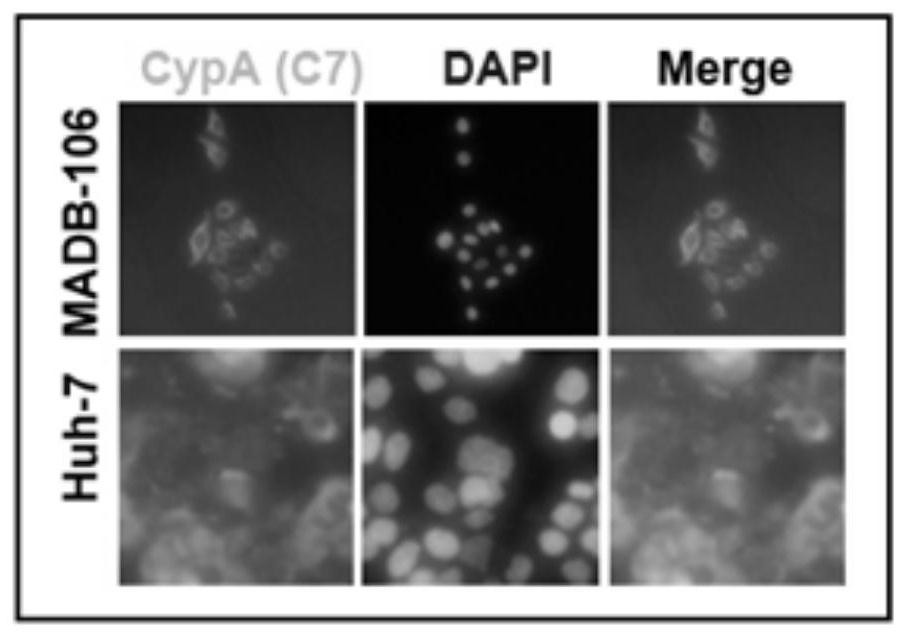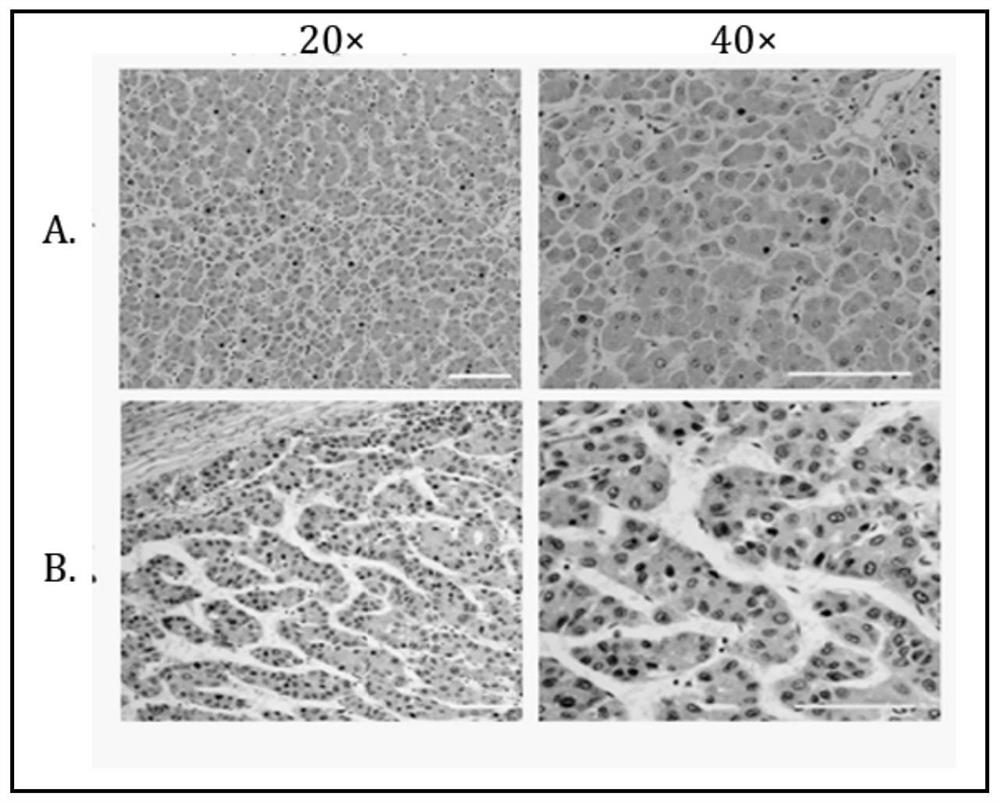Hybridoma cell, monoclonal antibody against human cyclophilin a and application thereof
A monoclonal antibody and hybridoma cell technology, applied in the direction of anti-enzyme immunoglobulin, antibody, application, etc., can solve the problem of lack of effective technical means for cancer
- Summary
- Abstract
- Description
- Claims
- Application Information
AI Technical Summary
Problems solved by technology
Method used
Image
Examples
Embodiment 1
[0044] Example 1 Preparation of mouse anti-human Cyclophilin A protein monoclonal antibody
[0045] 1.1 Using high-purity recombinant human CypA protein as the immunogen and complete Freund's adjuvant or incomplete Freund's adjuvant, the BALB / c mice were injected subcutaneously to immunize BALB / c mice. ~4 times, until the antibody titer of the vaccinated antigen in the immunized animal is fully increased to 1:50000. Antibody titers in tail blood serum of immunized mice were determined by ELISA. The last booster 4 days before fusion.
[0046] 1.2 According to the commonly used method, such as the method described in "Monoclonal Antibody Preparation Technology", spleen cells of the immunized mouse were fused with the myeloma cell line SP2 / 0, and the fusion agent was 50% PEG.
[0047] 1.3 The fusion cells were selectively cultured in HAT selective medium to kill the unfused myeloma cells. At the same time, indirect ELISA was used to screen hybridoma cells with positive express...
Embodiment 2
[0051] Example 2 Identification of Ig subtypes of anti-CypA mouse monoclonal antibodies
[0052] The immunoglobulin subtype identification of the anti-CypA mouse monoclonal antibody obtained in Example 1 was carried out according to the instructions of the commercially available mouse monoclonal antibody subtype identification kit (PIERCE), and the collected cell-secreted antibody supernatant was used for identification according to the steps. The experimental results are attached figure 1 Shown: The immunoglobulin obtained is of the IgG1 subtype and the light chain is the kappa chain.
Embodiment 3
[0053] Example 3 Identification of heavy chain and light chain variable region genes of anti-CypA mouse monoclonal antibody
[0054] Total RNA from hybridoma cells was extracted, and a commercial reverse transcriptase cDNA synthesis kit was used. The obtained cDNA was used as a template, and PCR amplification was performed using universal primers for mouse light chain and heavy chain variable region genes. The primers used for the upstream end of the variable region of the light chain of the mouse immunoglobulin gene are:
[0055] LL1: 5'-GGGGATATCCACCATGGAGACAGACACACTCCTGCTAT-3';
[0056] LL2: 5'-GGGGATATCCACCATGGATTTTCAAGTGCAGATTTTCAG-3';
[0057] LL3: 5'-GGGGATATCCACCATGGAG(AT)CACA(GT)(AT)CTCGGGTCTTT(GA)TA-3';
[0058] LL5: 5'-GGATATCCACCATG(GT)CCCC(AT)(AG)CTCAG(CT)TC(CT)CT(TG)GT-3';
[0059] MVK: 5'-GGGGATATCCACCATGAAGTTGCCTGTTAGGCTGTTG-3';
[0060] The primers for the downstream end of the variable region of the light chain of the mouse immunoglobulin gene are:
[0061...
PUM
 Login to View More
Login to View More Abstract
Description
Claims
Application Information
 Login to View More
Login to View More - R&D
- Intellectual Property
- Life Sciences
- Materials
- Tech Scout
- Unparalleled Data Quality
- Higher Quality Content
- 60% Fewer Hallucinations
Browse by: Latest US Patents, China's latest patents, Technical Efficacy Thesaurus, Application Domain, Technology Topic, Popular Technical Reports.
© 2025 PatSnap. All rights reserved.Legal|Privacy policy|Modern Slavery Act Transparency Statement|Sitemap|About US| Contact US: help@patsnap.com



